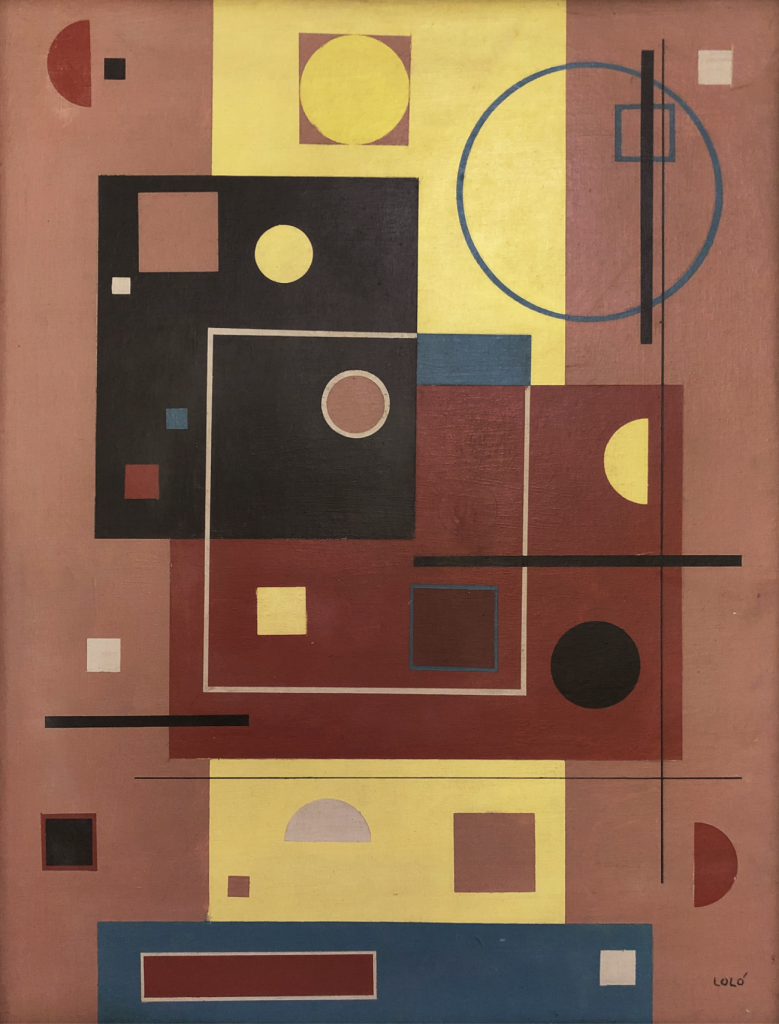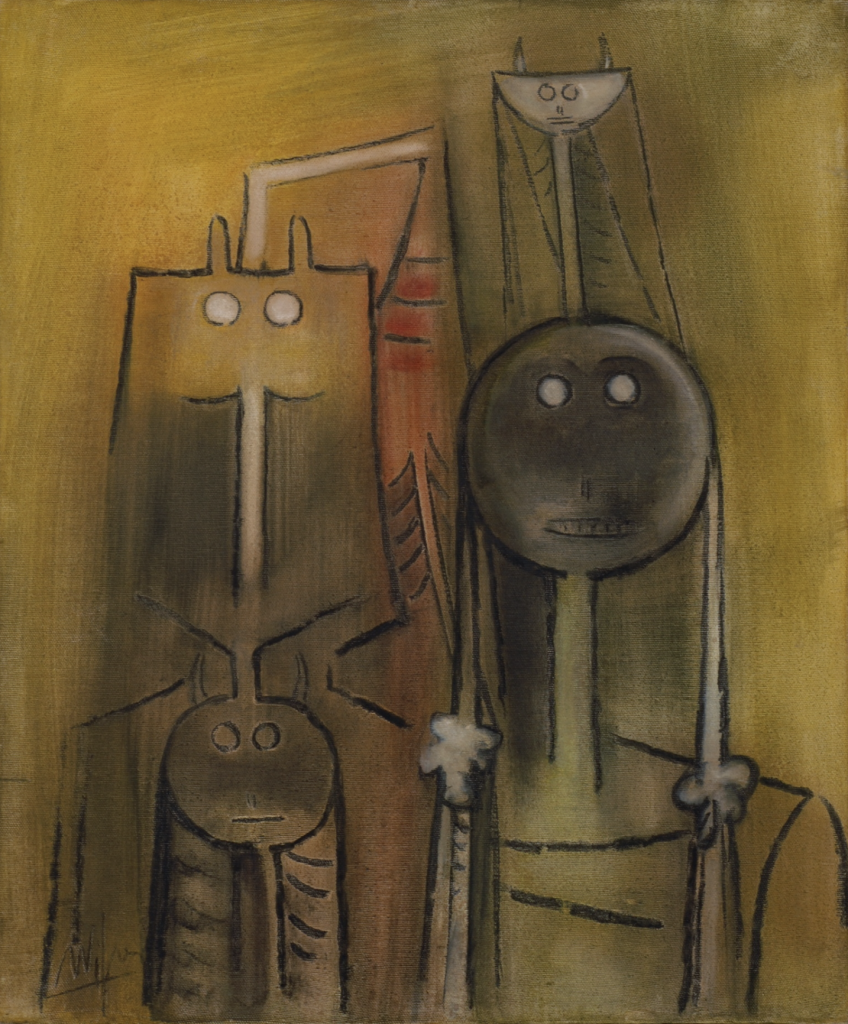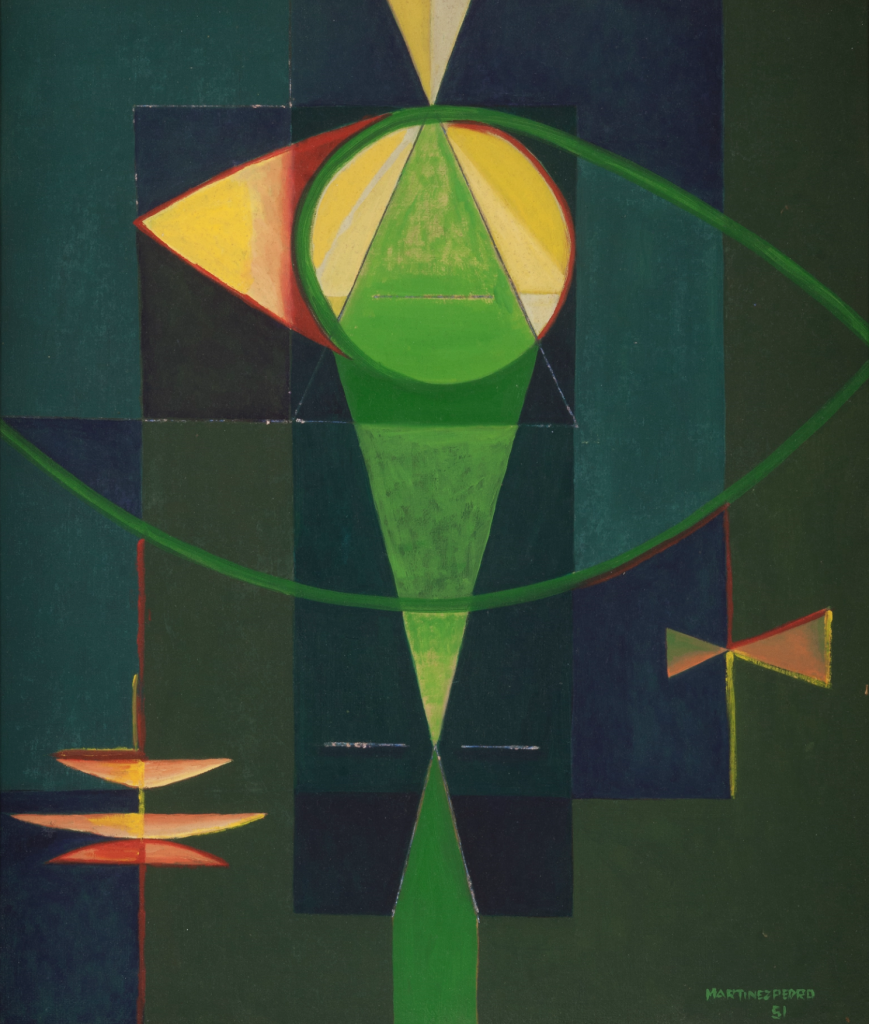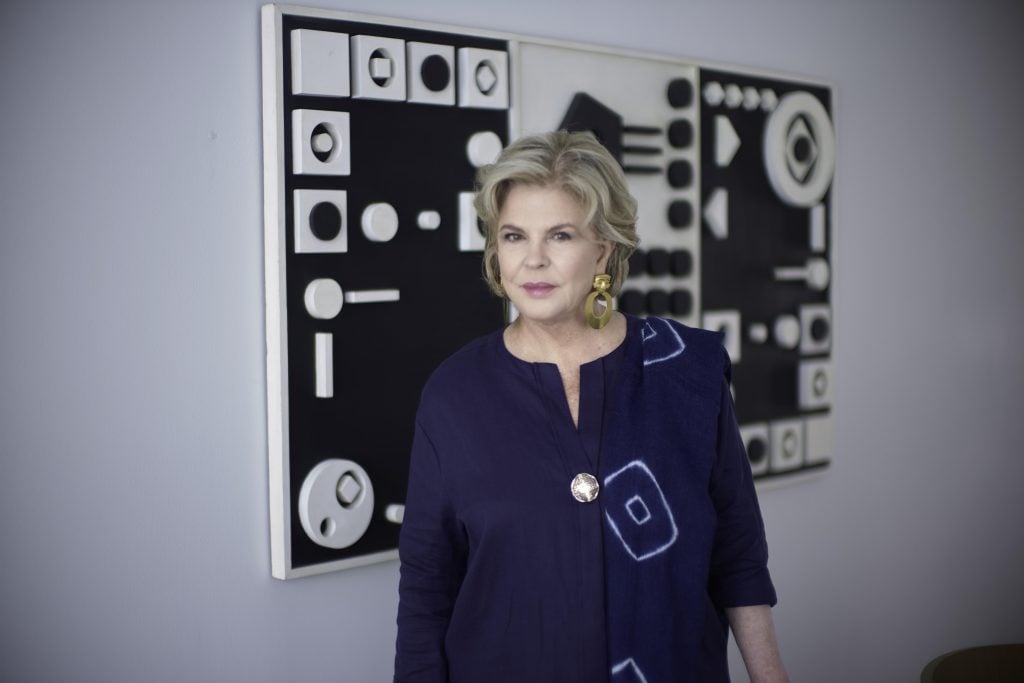Ella Fontanals-Cisneros is a global citizen, philanthropist, and entrepreneur. Fueled by a powerful mix of passion and curiosity, Cisneros has had a profound impact on the contemporary art world and beyond with her multifaceted pursuits. She began buying works by Latin American artists in 1970, and since then she has accrued a vast and varied collection. She founded the Cisneros Fontanals Art Foundation (CIFO) in 2002 as a means to foster the creative scene in Miami and support Latin American artists via grants, commissions, exhibitions, and bilingual publications.
Cisneros sat down with Colleen Cash, the vice president of Artnet Auctions, to discuss the importance of breaking down barriers in the American continent, in conjunction with the current auction All in Americas. The sale’s concept was created with Raphaël Castoriano, a multi-lingual artist, art advisor, and the founder and creative director of Kreëmart—as well as a collaborator of Cisneros’s, as the two have partnered to produce art performances and other projects involving such artists as Los Carpinteros, Carlos Garaicoa, Valeska Soares and Alexandre Arrechea, among others.
Read on to learn about Cisneros’s goals for the future of CIFO, thoughts on the NFT boom, and much more, and browse and bid on All in Americas, now through October 6.
Colleen Cash: Ella, you have such a global profile and have been involved in so many different pursuits. In light of that, the world might know you as a collector or a philanthropist or a visionary, or as a global citizen and thinker. With so many different categorizations, we want to know: how do you categorize yourself?
Ella Cisneros: I am a rather curious person, and that curiosity has taken me to explore many fields. I think that curiosity is one of my largest traits. Also, I would say that I try to lead my life in a spiritual way, which has brought me countless wonderful experiences and successes. Nevertheless, I have also been very impatient all my life, and that is something that I continuously try to appease. When you intend to live a spiritual life, you also have to be more patient and compassionate. That is something I still need to work on. But in general, I am a global person, a citizen of the world. I experiment in this life with passion.

Loló Soldevilla, Untitled (ca. 1950). Available now in All in Americas on Artnet Auctions (est. $18,000–$22,000).
CC: You were born in Cuba and raised in Venezuela. You’ve lived in Miami and Spain, and so many different cities. What is your relationship with the world? And what is your relationship with Spain, and its arts and culture, having come from two former colonies? How do you take your global experiences and upbringing with you?
EC: My ancestors are all Spanish, so Spain is a part of who I am. My grandparents on my mother’s side were from the Canary Islands, and on my father’s side, although my grandfather was born in Cuba, his parents were from Catalonia and France. So, my background is very European. Even though I was born in Cuba, they say that where you spend your adolescence is where you’re really from—and I spent that adolescence in Venezuela, so that is a part of who I am, too.
When you travel so much, as I have, and you have experienced exile—from Cuba, and from Venezuela due to the political situation—you begin to realize that it does not matter where you are born or raised. Of course, you want to feel that connection to your roots, but in reality, we are one planet. I feel fine wherever I am, to tell you the truth. It all becomes one thing for me, it is not separate; I am a part of everything.
CC: With that very global mindset, when we look at the art market and collecting categories, do you think that there is a benefit in looking at the Americas as one larger region?
EC: Oh, of course. For about 15 years, our mission at CIFO was to support Latin American artists, because I wanted to highlight my roots and I was so confident in that artistic scene. However, I now feel that we are all Americans. Why North, South, or Central America? Why do we have to divide the region so much? We decided around three or four years ago to include artists with a Latin American background who reside in the U.S. in the CIFO Grants and Commissions Award Program. A person that leaves Colombia, for example, and goes to live in the U.S. still has roots in Latin America, and therefore qualifies for a CIFO award.
We should not look at the art world in terms of regions, because art unites us all. It doesn’t matter who you are, where you live, or where you are from. Your art stands by itself. We tend to divide regions because of a human desire to feel a part of something. It is easier to feel like a part of a country or region than it is to feel part of the world.
CC: You already had a vision of unity in the Americas in mind when you started CIFO. What inspired you to launch the foundation in 2002? Why in Miami?
EC: I had been in philanthropy all of my life. I worked for the United Nations with a foundation that I created to unite the world. I had another foundation to sponsor children, and another to support hospitals. So, I have worked in many areas of philanthropy. At a time that I was working on my spirituality and looking for answers, I stopped collecting art. I felt that I was not reaching enough people or helping enough people by doing that. But, after seven years, I realized, why can’t I do the same philanthropic work with something that I am passionate about? That was my main motivation, to create a way of bringing to Miami all kinds of new exhibitions and artists into a cultural scene that was frankly weak.
Through that, I started helping artists, and especially Latin American artists. And then, In 2002, I opened CIFO to add structure to what I had already been doing.

Wifredo Lam, Untitled (ca. 1972). Available now in All in Americas on Artnet Auctions (est. $250,000–$350,000).
CC: How has your collecting shifted since then?
EC: Before, I was only collecting Latin American artists. After my seven-year break, I resumed collecting the Latin American artists that I knew. Through a process of trying new things, I began to bring to Miami exhibitions from the Centre Pompidou in Paris, the Reina Sofía in Madrid—places with a wider international outreach. And then I realized that my approach to collecting art should also be more international. Henceforth, I began investigating different areas of European art, American art, and Chinese art. I went to China and bought many pieces, but it’s difficult when you are so far from a region to stay on top of its internal dynamics. And in China, every year you can find thousands of exciting new artists and happenings, which can be overwhelming. I was traveling all the time, and I started looking at art in other places, and then with the help of the internet, I was able to go completely global. The internet gave me another perspective on the world, and influenced a lot of what I was trying to collect, or why I was collecting.
CC: As somebody who works for an online company, that was my next question: How has the internet changed consumers’ thoughts on regions? Has it broken down barriers? Has it changed the way you interact with art and artists? Is it a force of good?
EC: I think that the internet, first of all, has brought information about art and artists much closer. You can be in your home, and through the internet, do all of the research on what’s happening in, say, Europe. You can study artists from another region, far from home. That helps a lot. The internet has shown us all, in this pandemic, that we can come together without taking a plane or a train, or even leaving the house.
When I was working alongside the invention of the internet in 1988, I hoped that it would unify people, and make people understand each other. Who are they, and how do they live? It is a wonderful tool. And for art, it has opened a global window to the world. It has helped a lot of artists to become known. The internet is crucial to what collectors and artists are doing.
CC: And when you’re such a curious person, it is the biggest tool of all—it’s an encyclopedia and a studio visit and a connector, all in one.
EC: All at once. During the pandemic, I started making YouTube videos, and other things that I had never done before, because I had the time and I found it fascinating. When someone wanted to see what art I had in my house, I was able to walk through the house and show them this and that. That is a fantastic networking tool, and it really has changed the art world.

Luis Martínez Pedro, Untitled (1951). Available now in All in Americas on Artnet Auctions (est. $10,000–$15,000).
CC: Speaking of a changing art world, let’s talk about digital art and NFTs. Artnet will actually soon have an inaugural sale of NFTs, with the ability to mint them in house, so we are of like mind in our moving to embrace evolution and innovation. What are your thoughts on digital art? Do you think NFTs are here to stay, or do you think they’re a passing fad?
EC: I think that we have not fully understood the scope of what NFTs are going to be. And for the art world, it’s going to take a while, because we are used to touching, viewing, and having things in our hands. But this is the future. It’s what my grandchildren and their children will be looking at. It will likely be mainstream in a couple of years, but today it is new and different. We are experimenting and looking at everything. I started looking into all of this six months ago, and as a result, our next CIFO awards will all go to digital artists. We are collaborating with Arts Electronica in Austria to make all the awards electronically this year.
CC: As a collector—and perhaps you have different answers for different categories—how do you go about evaluating an artwork? At what point would you know it was a must-have for your collection?
EC: Nowadays, collecting art has become a status symbol. But if you really love art, and you are really into this, you have to look at who the artist is: What are they doing? What is their future? How do you like it, how does it feel for you? Are you happy with it? Do you love it? Is it something that you want to learn more about? I always say that the path is what is most important, because as you are experiencing art and finding what sticks with you, you discover who you are. That is what makes you a collector. The rest is only the market.
CC: What still excites you about the art world? What makes you want to get up every morning and dive into the next big adventure?
EC: I would love to take CIFO and open a museum in Madrid. Unfortunately, this has not happened due to politics. But I do not lose sight of what I would love to do. I want to share my legacy, in either a museum or somewhere where I can give these beautiful works of art for the public to see from time to time. I would really love to have a space where I can share the pieces with the world.









